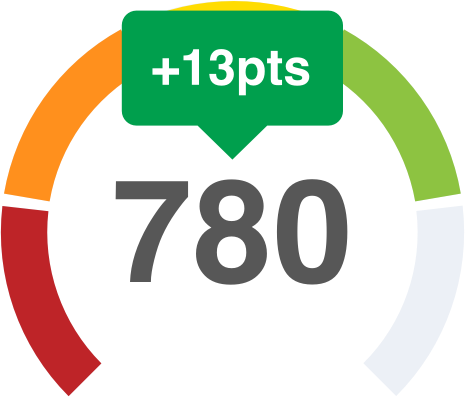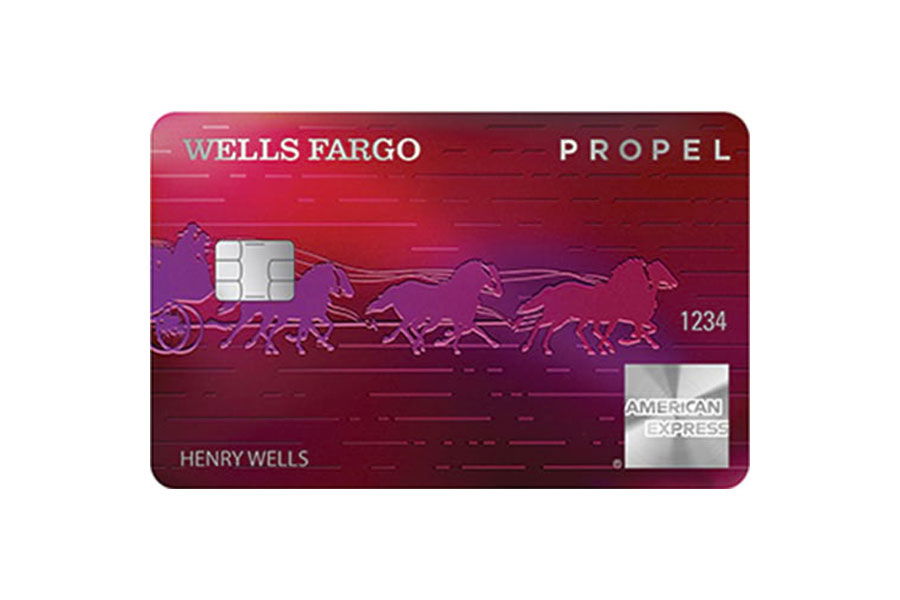Your credit score has a massive impact on your overall financial well-being. A good credit score will help you buy a new car, purchase your first home, or take a relaxing vacation overseas. However, without a good credit score, you will be saddled with high interest rates or unable to obtain any credit at all.

What’s worse, your poor credit may not even be your fault. A recent FTC study of the credit reporting industry indicated shocking results. At least 5% of consumers had errors on their credit reports that were so severe that they led to higher loan rates and insurance premiums.
Around 20% of consumers who identified and disputed errors on their credit reports improved their credit scores so much that they moved into a lower risk category. That means they were able to qualify for lower rates.
How many consumers haven’t checked their credit reports to identify errors? And how much more could they be saving if they did? Thankfully, your credit history and credit score can be improved legally and ethically to help you secure the best rates.
Ready to Raise Your Credit Score?
Learn how credit repair professionals can assist you in disputing inaccuracies on your credit report.

How to Improve Your Credit Score in 12 Steps
Improving your credit score may seem like an uphill battle, but with the right strategy and a bit of patience, it is entirely achievable. These 12 carefully curated steps will provide you with a roadmap to healthier credit, helping you unlock better financial opportunities down the line.
Step 1: Get a Free Credit Report from Equifax, TransUnion, and Experian
The first step to improving your credit score is to order a free credit report from each of the three major credit bureaus. You are allowed a free credit report from Equifax, Experian, and TransUnion every 12 months.
You can also get an additional credit report for free in some states. Furthermore, you can also receive one for free if you have been denied credit or employment because of your credit report.
Step 2: Check Your Credit Score
To improve your credit score, you need to know what it is first. You can order your FICO score directly from MyFICO for a fee. You can also get it for free if you have any of the credit cards that offer free FICO scores.
Step 3: Check for Accuracy
Once you have your credit reports, review them carefully and look for errors. Nearly 60 million Americans are affected by identity theft, and credit report errors are very common. So, it’s essential to make sure your credit history is accurate.
By eliminating just one inaccurate or negative item from your credit report, your credit score can dramatically improve, increasing your chances of getting credit. Alternatively, you might find some missing positive information that could help raise your credit score, like a lower loan balance. Updating or adding the correct information with each credit bureau could quickly improve your credit score.
Your Credit Reports Accuracy Checklist
- Incorrect amounts owed: If the amount owed is listed incorrectly, your credit reports won’t accurately reflect your utilization or the amount of credit used. High utilization can negatively impact your credit scores.
- Accounts that belong to someone else: If you have no recollection of a debt, it may not even be yours. Any unknown debt should be disputed.
- Incorrect delinquencies: Items may list as being paid late, even if they were paid on time. Late payments damage your credit score and should be disputed.
- Inaccurate reporting of collections accounts: Collection companies are notorious for putting information on a credit report simply to extort money from unwary consumers. If the information is incorrect, it should be disputed.
- Duplicate collections accounts: A collection account should only be listed on your credit report once. If it is listed multiple times by the same organization or by competing organizations, all but one listing should be removed.
You may also want to consider using a credit monitoring service to stay on top of your credit every month.
Step 4: Disputing Inaccuracies
Once errors have been identified, they will need to be successfully disputed. As long as a negative item remains on your credit report, it will drag down your credit scores. Therefore, the quickest way to improve your credit scores is to remove as many of these errors as possible. You can do this by disputing incorrect negative information with the credit bureaus.
When a consumer seeks to dispute an item on their credit report, the business or entity that listed the item must prove that it is accurate. For collection accounts, a collection agency will have to provide validation or proof of the debt within 30 days of the request or remove the item. For best results, validation requests should be sent in writing, with proof of delivery.
If the company is unable to prove the debt, they are required to remove it. If they don’t remove it, you will have to dispute the debt with the credit reporting agency. A dispute can be sent by letter or online and requires the reporting agency to confirm the debt or remove it. Once negative information is removed, your credit scores should see an increase.
Step 5: Pay Your Bills on Time
Payment history accounts for 35% of your credit score, making it the largest contributing factor. So if you want to get your credit scores back on track, you need to keep up with your monthly bills. Not all creditors report your timely payments, although credit card companies and mortgage lenders typically do.
If your account becomes 30 days delinquent or more, just about all creditors can report the late payment to one or more of the three major credit bureaus. That will impact your payment history and dock your credit score significantly, and it just gets worse every 30 days.
Late payments can also lead to charge-offs and collections, meaning your outstanding debt is sold to a collection agency. That can cause an enormous drop in your credit score.
Set yourself up for success by enrolling in an automatic bill pay for your recurring monthly payments. You can either go through your bank or do it at each of your creditors’ sites. As long as you have money in your account, you can benefit from the peace of mind that all of your bills are taken care of on time with the automatic payments. Then you can sit back and watch as you increase your credit score month after month.
Step 6: Pay Off Your Debt
The next most important part of your credit score is how much debt you have. There are a couple of different ways of tackling this section. The first issue is having too much revolving credit vs. installment credit.
The difference is that installment debt has a set term with regular monthly payments. Auto loans, mortgages, and student loans are installment credit accounts. This is looked on more favorably than revolving credit accounts, which are associated with credit cards.
It’s essential to have both types of accounts, as credit mix accounts for 10% of your credit score. However, you want to work on paying off your revolving credit card debt first.
Take a look at the debt snowball and debt avalanche methods to figure out the best debt repayment strategy for your situation.
Available Credit
Take a look at how much of your available credit limit is used on each of your credit card accounts. If a credit card account is maxed out, your credit score is going to take a hit. It’s better to spread out your credit card balances among numerous cards (assuming the interest rates are comparable) rather than putting everything on one card.
Most experts recommend charging no more than 30% of your available credit. This is called your credit utilization ratio or credit utilization rate. If your credit utilization rate is higher than 30%, you’ll definitely want to work on getting that debt paid off as soon as possible.
For credit cards, avoid maxing out any one account. The same amount of debt spread out over multiple cards is weighted better than having a maxed-out balance on one and no balance on the others. Shoot for keeping each account under 30% utilization. Assuming the rates and fees are all comparable, using that baseline can help you prioritize how you pay off your debt.
Step 7: Use Credit Responsibly
Once you have your debt under control, particularly your revolving debt, make sure you continue to use your credit responsibly. Using your credit card isn’t bad at all. In fact, since most credit card companies report on-time payments, it’s a great way to build credit.
Even if you don’t need to use your credit card, consider charging just one or two bills on it each month. Then, make a payment before the due date. This allows you to quickly rack up payment history, which will improve your credit scores.
Step 8: Keep Positive Accounts Open
Your credit score is also influenced by how long your credit accounts have been open, particularly the positive ones. Even if you don’t use a particular credit card and there’s no outstanding balance, consider keeping it open if you’ve had it for several years. Your credit score takes into account the average age of your credit cards because it indicates you’ve had a longer track record of on-time payments.
There are instances where you might not want to keep a credit card open just for the account age. That’s if you pay an annual fee for the luxury of using the card. If you get reward points that vastly surpass the cost of the fee, that’s fine. But if you’re paying $100 a year for a card you don’t use, it’s probably not worth having in your wallet.
Authorized User
If you’re new to having credit cards, there’s a way to get around this area. You can become an authorized user on someone else’s account. Then the entire history should show up on your credit report. So, if the credit card has been open for eight years, that will be reflected on your credit report.
On the flip side, if that person has made late or missed payments, it could damage your credit score. Plus, they’ll need to trust that you won’t charge exorbitant purchases on the card and that you’ll pay off anything you owe. Or you could just not take a copy of the card, so there’s no temptation.
Step 9: Minimize Credit Inquiries
A final way to improve your credit score is to hold off on frequent credit checks. This comes from applying for several credit cards and loans. Each time you apply for credit from a separate creditor or lender, a hard inquiry is noted on your credit file. Each one adds up to a few points deducted from your credit score for a year. The inquiry itself will be listed there for two years.
However, if you are looking for the same type of credit within a several-week period, that’s counted as a single inquiry. Lenders appreciate that you want to find the best deal. But if you’re applying for a new credit card every single month, they’re bound to raise an eyebrow or two. So, it’s wise to apply for credit only when you need it and think about it strategically.
Step 10: Use Your Debit Card
By opening a bank account with Current, you can seamlessly build your credit just by using your debit card on everyday transactions. There are no monthly fees, no credit checks, and no need to take out a loan.
Current also offers plenty of other features, like the ability to get paid up to two days sooner, fee-free overdraft, and you can earn 4.00% APY on your balances.
Step 11: Open a Secured Credit Card
A secured credit card is a type of credit card backed by a cash security deposit. The security deposit serves as collateral if you default on your payments.
Secured credit cards are generally used by people who have no credit or bad credit trying to establish a positive credit history.
With a secured card, credit limits are usually the same amount as the deposit you make. For example, if you open a checking account and put $500 in it, you get a credit card with a $500 credit limit. You get that money back from the credit card issuer when you close your card or upgrade to a traditional one.
Step 12: Take Out a Credit Builder Loan
Several companies are starting to offer credit builder loans to consumers who want to build credit and improve their credit scores. You can also sometimes find them at credit unions or small community banks.
With a credit builder loan, you essentially repay the loan in advance of receiving any money.
Once you get approved for a credit builder loan, the money is transferred into a savings account, but you can’t access it yet. You then begin making monthly payments on your loan, and once you pay it off, you get the funds.
The lender reports your on-time payments to the credit bureaus. This lengthens your payment history and boosts your credit score.
Check out Self. They allow you to take out a loan in increments ranging from $550 to $2,200. The money is held in a CD account and earns interest while you make monthly payments for a year. You can also check out our full review of Self.
Step 13. Ask for a Credit Limit Increase
Increasing your credit limit will lower your credit utilization ratio, which can help raise your credit scores. You want to keep your credit utilization ratio at 30% or below. Your debt-to-credit ratio is one of the most important factors that affect your credit scores.
Another Option: Reputable Credit Repair Services
Repairing your credit history and improving your FICO score can be a lengthy process, but credit repair companies do most of the work.
In many instances, the only thing you’ll need to do is order a copy of your credit reports and make a note of any inaccuracies that you want to have disputed. They keep up with validation letters, credit bureaus disputes, and all the deadlines involved.
The money you spend on credit repair is an investment in your financial future and well-being.
Frequently Asked Questions
What is a good credit score?
Credit score ranges vary depending on the credit scoring model. However, with FICO, a credit score of 670 to 739 is considered good.
Having a good credit score will typically qualify you for most credit products. This range is considered to be a lower risk to lenders, so they may be inclined to offer you better terms and lower interest rates.
How long does it take to improve your credit score?
The amount of time it takes to improve your credit score can vary depending on how low your score is to begin with and the steps you take to improve it. If your credit score is already on the higher end, it may take as little as several months to see an improvement. On the other hand, if your score is low, it could take 12 to 18 months or longer to start to see a significant improvement.
What is the fastest way to improve your credit score?
The fastest way to improve your credit score is to become an authorized user on someone’s credit card account who has excellent credit. By doing so, you will immediately inherit all of their credit history for that account on your credit report.
You should also focus on make timely payments on your existing accounts. Paying your bills on time can help you avoid late fees and penalties that can hurt your credit score.
Furthermore, focus on paying down any credit card debt you have as quickly as possible. The amount of debt you have relative to your available credit, also known as your credit utilization ratio, is one of the most important factors used to calculate your credit score.




